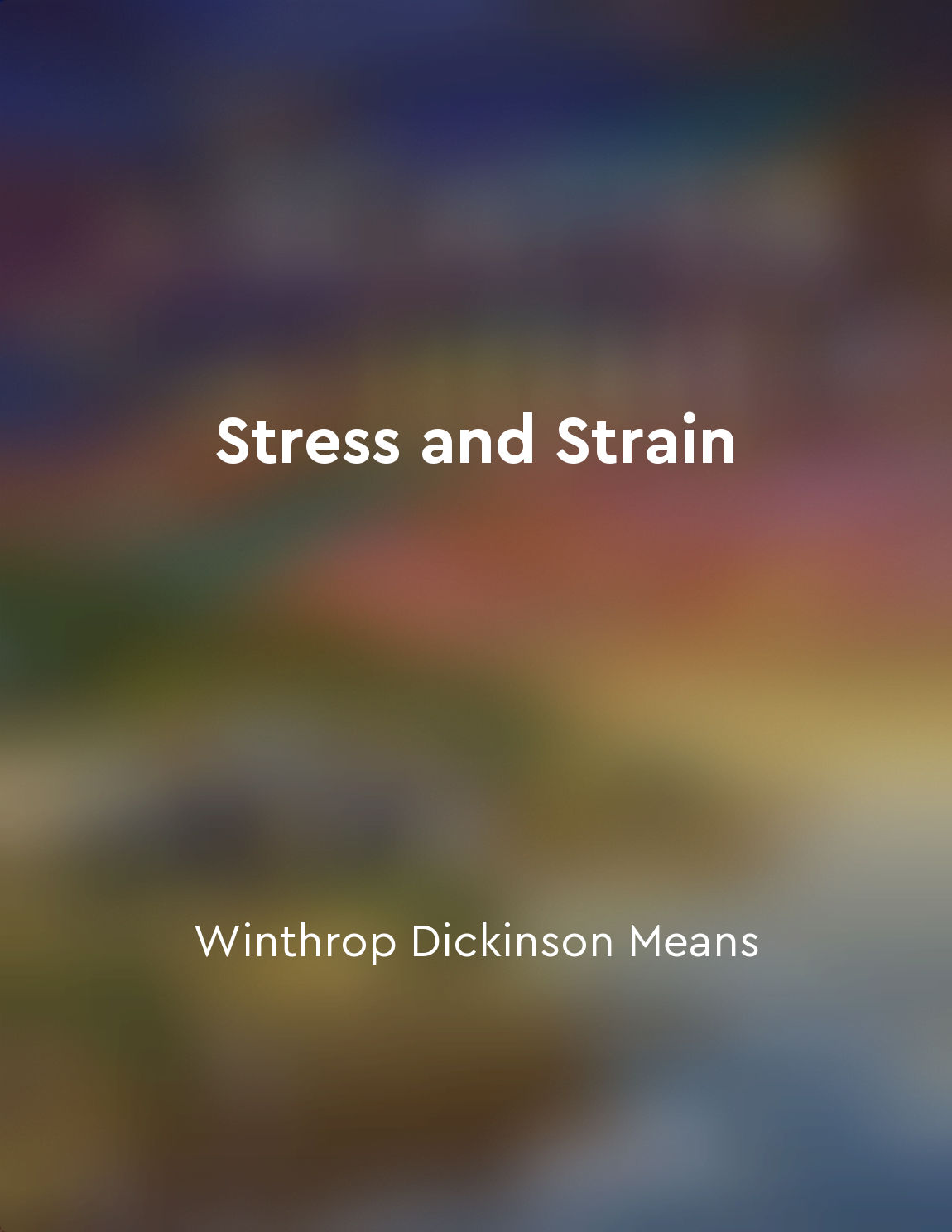Ductility and malleability are important properties in preventing stress failure from "summary" of Stress and Strain by Winthrop Dickinson Means
Ductility and malleability play crucial roles in preventing stress failure. When a material is ductile, it can undergo significant deformation before reaching its breaking point. This ability to stretch and bend without breaking is essential in distributing stress evenly throughout the material. In contrast, materials that lack ductility are more prone to sudden fractures when subjected to stress. This can lead to catastrophic failures in structures, machinery, or other components. Malleability, on the other hand, allows a material to be easily shaped or formed under stress. By being able to deform plastically, ductile and malleable materials can absorb and dissipate stress without undergoing sudden failure. This property is particularly important in applications where materials are subjected to varying levels of stress over time. In situations where stress concentrations occur, ductility and malleability help in reducing the likelihood of cracks forming and propagating. This, in turn, enhances the overall strength and durability of the material. In engineering and design, the choice of materials with adequate ductility and malleability is crucial to ensuring the safety and reliability of structures and components. By understanding and utilizing these properties effectively, engineers can prevent stress failure and prolong the lifespan of their creations.Similar Posts
The history of mechanical engineering provides valuable insights into the evolution of the field
The development of mechanical engineering over the years offers a window into how the field has progressed and transformed. By ...
Compounds are made up of different types of atoms bonded together
Compounds are formed when atoms of different elements combine through chemical bonding. These atoms come together to create a n...
Problemsolving skills are invaluable in the world of mechanics
One of the most essential qualities a mechanic can possess is the ability to solve problems effectively. Mechanics are faced wi...

Understanding stress and strain can help prevent material failure
Understanding stress and strain is crucial in preventing material failure. When a material is subjected to external forces, it ...
Quality control measures help ensure the reliability and performance of mechanical systems
Quality control measures play a crucial role in maintaining the reliability and performance of mechanical systems. These measur...

By understanding stress and strain, we can optimize material performance and enhance structural integrity
Understanding stress and strain is crucial for optimizing material performance and enhancing structural integrity. By delving i...

Stress can cause materials to deform permanently
When a material is subjected to stress, it may deform. This deformation can be temporary, meaning that the material will return...
